Brownhills is where I grew up. It’s part of the Black Country, the heartland of England’s industrial revolution in the 18th and 19th centuries. Someone told me that Brownhills got its name from the brown earth spoil from digging the pits - known colloquially as “slag”.
I’m back for a short visit and walking around Brownhills this morning; I had a strange sense of my past mixed in with the deeper history of the area. I was never particularly proud of my home town as a kid. Today I reevaluated the place of my birth and the proud heritage of industry and engineering in the area.
From my parents’ house, I walked along the canal under Middleton Bridge and down the steps to The McClean Way towards the Smithy’s Forge gate and up along the High Street…
Middleton Bridge
Middleton Bridge carries Chase Road over the Anglesey Branch of the Wyrley and Essington Canal. The waterway was built to transport coal and limestone from Wyrely to Wolverhampton and Walsall.
This was my route to school; walking this way meant I could avoid the noise and fumes of the cars on the A5. When I was a kid, the canal would freeze in winter, and those brave or stupid enough could walk from one side to the other. This was as long as you didn’t get too near the bridge, where the canal narrows and the ice becomes thin.
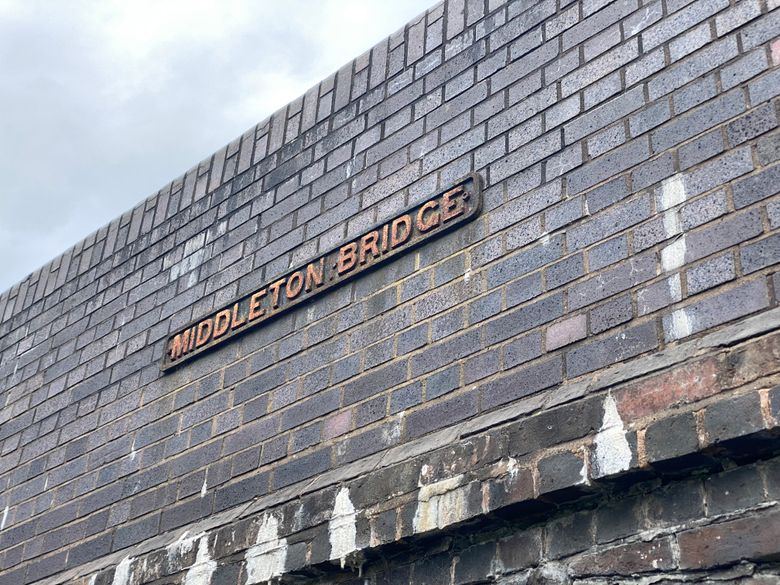
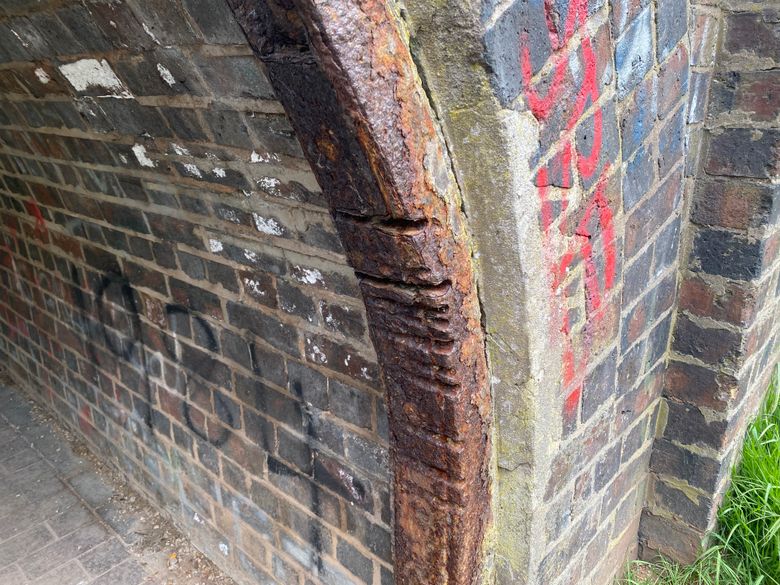
If you head north from the bridge, you’ll come to Chasewater. This massive reservoir was completed in 1797 and designed to refill the canal system. When a boat exits a lock, around 100,000 litres of water is displaced down-canal. The constant too-and-fro of badges in the late 18th and early 19th centuries meant that the waterway often needed to be refreshed.
Unfortunately, just two years after it was opened, a vast storm destabilised the dam at Chasewater releasing billions of litres of water that damaged everything in its path—up to four miles away! The dam’s engineers redesigned the wall, and, in a testament to just how vital the canal was at the time, Chasewater was once again operational nine short months later.
One hundred ninety-five years later, aged fifteen, I was sailing dinghies on Chasewater with no appreciation of the incredible work of the Navvies, who built the wall that held the water in place.
The McClean Way
John Robinson McClean was a railway engineer who was the first—and possibly only—person to be the sole owner of a railway. His company, The South Staffordshire Railway, built many of the lines in the Midlands, one of which ran near my house.
We called the disused railway “The Batters” and would often scramble up and down its steep banks home from school. Or, hide here rather than complete a cross country run. It was pretty inaccessible, having been left for nature to reclaim after the railway closed in 1983.
But now, thanks to the fine folks at Back The Track, the railway has a new lease of life. Volunteers have cleared a significant part of the line; it’s now a popular spot for walkers and cyclists. There are plans to remove the remaining section from the A5 to Lichfield. But who knows if and when that will happen? Still, I’m hopeful of one day being able to cycle the route from Pelsall to Lichfield.
On the McClean Way gates, near the Smithy’s Forge pub, there’s an incredible photo of a train, smoke billowing from its chimney, departing the station in the direction of Lichfield. It’s a heartbreakingly romantic image of a Brownhills I never knew. It’s a shame the railway disappeared; I wonder what the town’s fate would have been with a decent transport link to Walsall and Birmingham. It could have found a new lease of life as a commuter town. Alas, it was never to be.
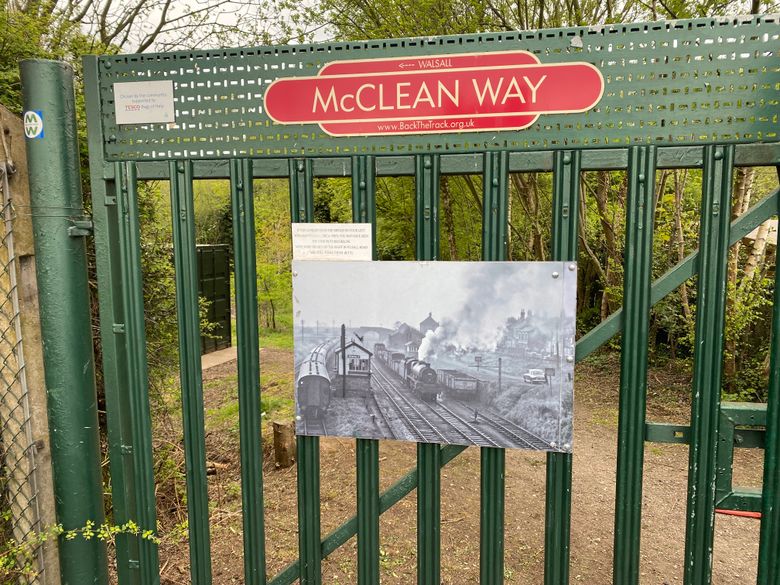
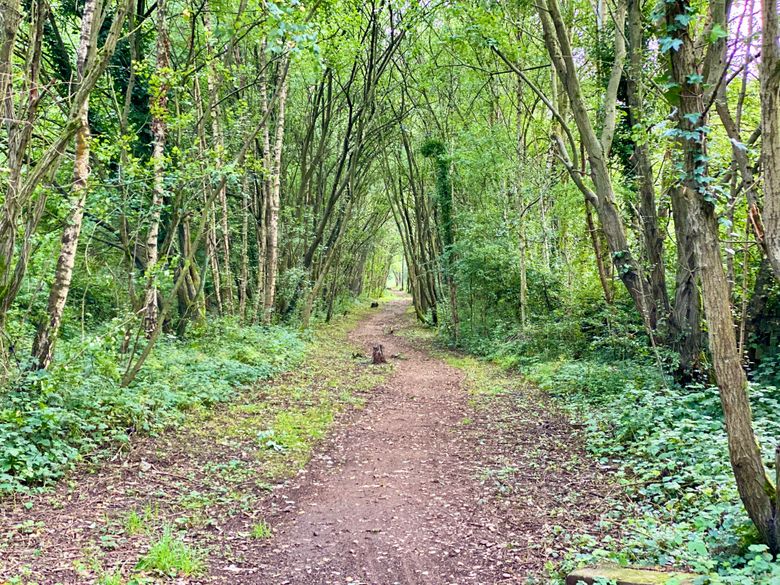
The High Street
Brownhills High Street is heartbreaking. Where there were once thriving businesses, now there’s a collection of takeaways and graffitied shutters. The ruins of the Ravens Court Shopping Centre are particularly emotive for me.
There’s a strong sense of my Mom here. A shop sold wool and other various knitting paraphanialla a few doors from the paper shop where she’d always buy me a 10p mix. There isn’t much left from the glory days, but the tiles remain with their weird pattern. The sight of the tiles is like a time machine in my head, instantly transporting me back to the ‘80s, shopping with my Mom.
I can feel the pride someone once had when erecting the cast-iron arch with its “Ravens Court” lettering. This cornerstone of my youth is now shuttered and abandoned.
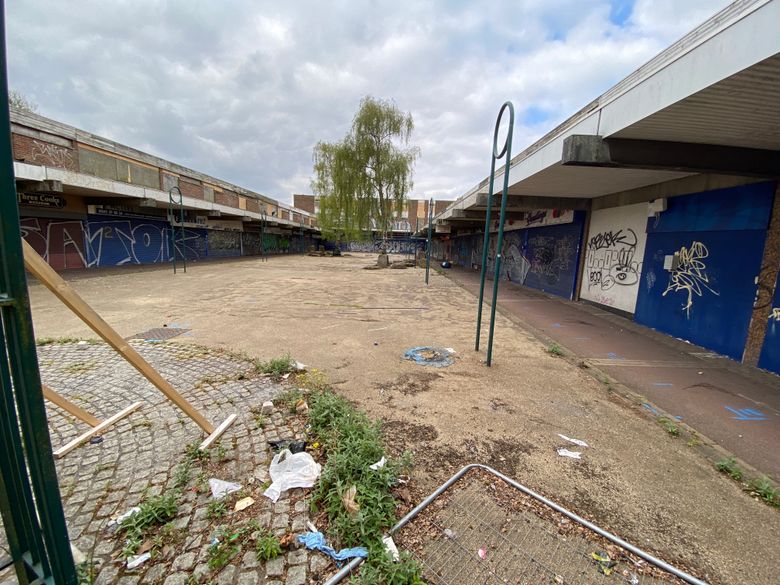
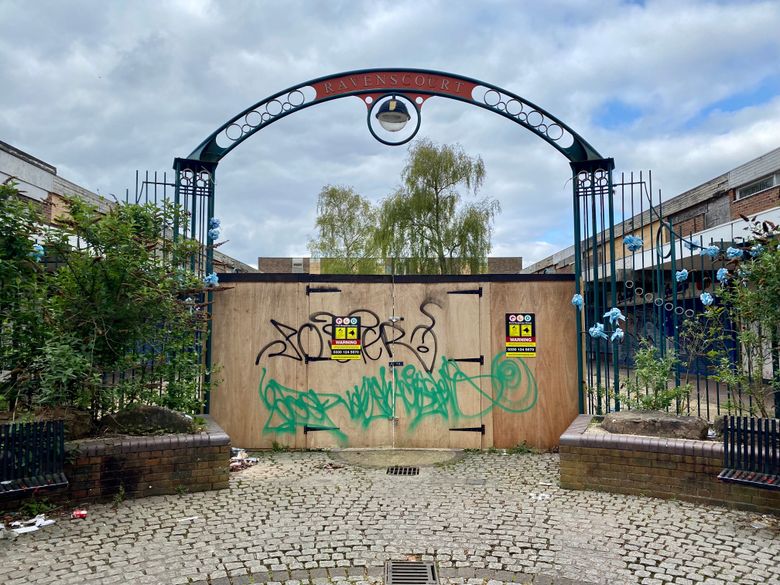
Addendum
The High Street is a sharp reminder that the decline I witnessed first-hand in the ‘80s and ‘90s is still evident today. Despite the promise of those early pioneers and the canals and railways they built, the town is a shadow of its former self.
Of course, there are complex reasons for this: The death of coal mining, the general decline of the high street, and successive governments who have invested too little.
I’ve consistently turned to Brownhills Bob for inspiration in writing this post. Bob’s fantastic blog gives me hope. Bob and the hundreds of people who comment on the blog love Brownhills. The real treasure in Brownhills is its people.
And, for the first time in a long time, real change is coming to Brownhills: Aldi has plans to regenerate Ravens Court, and businesses are springing up to capitalise on the planned clearway extension. Maybe the future of Brownhills is tourism? After all, with its rich history of industry and various green spaces, Brownhills is fascinating and beautiful.